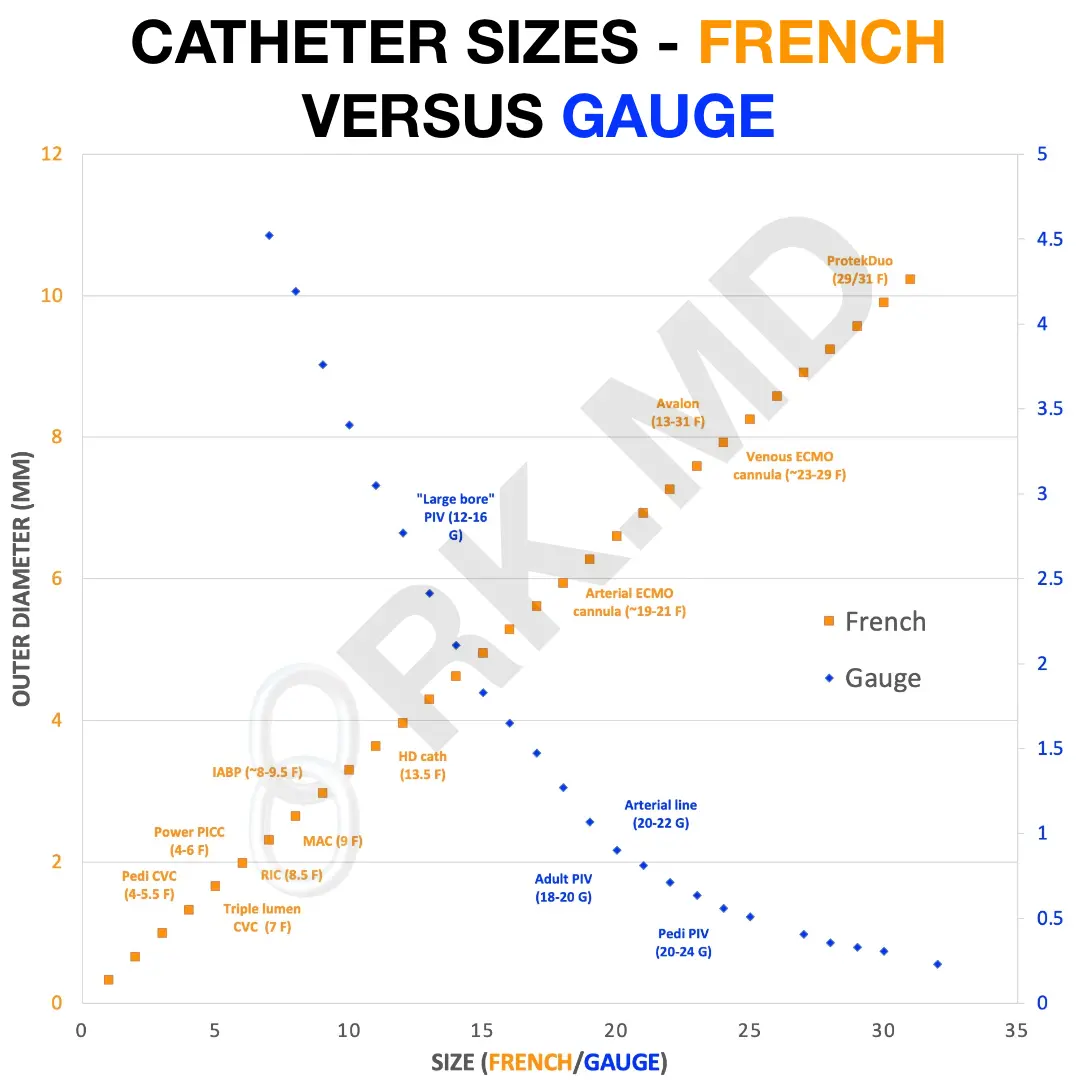Whether it’s a 1.88 inch long 20 gauge peripheral intravenous (PIV) catheter or a 13.5 French Mahurkar dialysis catheter, healthcare workers are exposed to both the “gauge” and “French” unit systems almost every day. As an anesthesiologist and intensivist who places many kinds of catheters, it’s important for me to understand these measurements (for example, when we use ultrasound to size cannulas for ECMO) as they apply to quantifying inner diameters (ID) and outer diameters (OD).

1 French (F) is defined as 1/3 of a millimeter. Therefore, a 10 French catheter (3.33 mm diameter) is exactly half the diameter of a 20 French catheter (6.66 mm diameter). Consequently, as the catheter diameter increases, so does its French size in a linear fashion as shown by the orange line in the diagram above.
Gauge (G) is quite different and more commonly used for peripheral IV sizing. An increasing gauge size implies a decreasing diameter. In other words, a 16 G catheter has a larger diameter than a 24 G catheter. Unlike the French system, the gauge scale does not have fixed intervals. As shown by the blue curve in the diagram, one can see that the diameter intervals are smaller at higher gauge sizes (smaller catheters), but these intervals increase at smaller gauge sizes (larger catheters). Because of these irregular intervals, a 10 G catheter is not exactly twice as large as a 20 G catheter.
I’ve included some common catheters we place in the perioperative and intensive care settings in the diagram. Drop me a comment below with questions! 🙂





